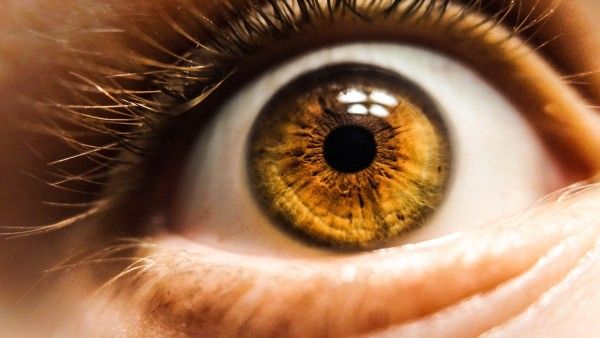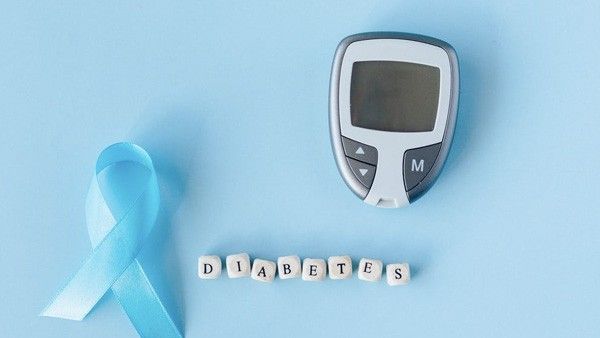Just In
- 37 min ago

- 4 hrs ago

- 8 hrs ago

- 8 hrs ago

Don't Miss
- Automobiles
 Maruti Suzuki Swift Sees Price Hike Across Variants: New Model Launch In May 2024
Maruti Suzuki Swift Sees Price Hike Across Variants: New Model Launch In May 2024 - News
 Lok Sabha Election 2024: Voting Begins In Eight LS Seats In Uttar Pradesh
Lok Sabha Election 2024: Voting Begins In Eight LS Seats In Uttar Pradesh - Movies
 Bade Miyan Chote Miyan Box Office Day 8: Akshay’s Film Sees Its Lowest Number As It Struggles To Cross 50Cr
Bade Miyan Chote Miyan Box Office Day 8: Akshay’s Film Sees Its Lowest Number As It Struggles To Cross 50Cr - Finance
 Stocks To Buy: 2 Trade Calls By Chandan Taparia of Motilal Oswal On Friday, 19 April
Stocks To Buy: 2 Trade Calls By Chandan Taparia of Motilal Oswal On Friday, 19 April - Sports
 LSG vs CSK IPL 2024: Who will Pick Maximum Wickets in Lucknow vs Chennai?
LSG vs CSK IPL 2024: Who will Pick Maximum Wickets in Lucknow vs Chennai? - Technology
 Nothing Phone 2 Receives NothingOS 2.5.5 Update with ChatGPT Integration and More
Nothing Phone 2 Receives NothingOS 2.5.5 Update with ChatGPT Integration and More - Education
 Karnataka SSLC Result 2024 Soon, Know How to Check Through Website, SMS and Digilocker
Karnataka SSLC Result 2024 Soon, Know How to Check Through Website, SMS and Digilocker - Travel
Telangana's Waterfall: A Serene Escape Into Nature's Marvels
What Is Diabetic Retinopathy? Stages, Symptoms, Risk Factors, Treatments And Prevention
World Diabetes Day is celebrated every year on 14 November to raise awareness on this chronic global health issue for its early detection and prevention and support people with diabetes to manage the condition well and prevent its complications.
Diabetic retinopathy is the most common microvascular complication of diabetes characterised by visual problems or loss of vision. A study says that in Western populations, diabetes retinopathy is the leading cause of severe vision loss in adults of working age groups. [1]

Along with diabetes retinopathy, uncontrolled diabetes also causes other eye problems such as glaucoma, cataract, diabetic papillopathy and ocular surface disorders. Early detection and strict management of glucose levels is the key to avoid retinal damage or blindness associated with diabetic retinopathy.

In this article, we will discuss details on the same. Take a look.

Causes Of Diabetic Retinopathy
Diabetes is a chronic condition in which the glucose or sugar levels in the body gets high leading to various problems, including damage to small blood vessels.
Our eyes contain many microvessels or small vessels that help transport blood to its various parts. High glucose in blood vessels increases the blood pressure in these vessels leading to its narrowing, along with damage to its inner linings. [2]
As a result, the arteries respond by forming a plaque-like layer to fill the damage to the arteries, and leads to blockage in the tiny vessels that prevents the supply of blood to the eyes. Also, when the eyes try to grow new blood vessels, they do not grow properly leading to leakage problems. This results in diabetic retinopathy.

Stages Of Diabetic Retinopathy
Diabetic retinopathy is classified into two main stages based on its progression:
1. Non-proliferative diabetic retinopathy (NPDR)
It is the early stage of diabetic retinopathy and occurs in most diabetics. The NPDR is developed when the blood vessels supplying your retina (and eyes) get obstructed. This results in microaneurysms (minute bulges), haemorrhages and hard exudates formed all over the blocked vessels as they fail to push out the blood. The swelling and blockage of blood supply in the eyes result in blurred or poor vision. [3]
2. Proliferative diabetic retinopathy (PDR)
It is the advanced stage of diabetic retinopathy. Once the disease has progressed considerably and a large number of arteries are occluded, new vessels start to develop from these obstructed ones. Only, they are abnormal blood vessels and fail to supply the blood to the eyes properly, and instead leak blood and fluid into the clear jelly of the eyeball (the vitreous humour). This leads to dark floaters and then vision loss. [4]

Symptoms Of Diabetic Retinopathy
Diabetic retinopathy develops over time. At an early stage, the patient may be asymptomatic and show symptoms only when the disease has progressed considerably.
Some of the symptoms of diabetic retinopathy include: [1]
- Blurred vision
- Fluctuating field of vision
- Floaters - dark strings/spots that float past your field of vision due to haemorrhaged blood in the vitreous humour of the eye.
- Colour blindness
- Poor night vision
- Blindness

Risk Factors Of Diabetic Retinopathy
Diabetes retinopathy can affect individuals with both diagnosed and undiagnosed diabetes mellitus. Its development is directly proportional to the age, duration, diabetic control and fluctuation of blood pressure in the patient.
Some of the risk factors of diabetic retinopathy include:
1. Age of the patient
The risk of developing diabetic retinopathy is considerably higher in older patients due to their age than adults or children. [5]
2. Status of blood sugar
People who have poorly controlled blood sugar are at a greater risk of developing the complications associated with diabetes, including diabetic eye disease.
3. Duration of diabetes
If a person has had diabetes for many years, they are at increased risk of the condition, compared to those who have developed recently. Sometimes, the duration of diabetes may vary as the condition remains undiagnosed in many due to late detection.

4. High Blood Pressure
The body's blood vessels are not equipped to handle blood rushing through them under high pressure for long durations of time. That's why those who suffer from hypertension may often develop arterial complications, including diabetic retinopathy. [6]
5. High Cholesterol
Cholesterol plaques can clog the arteries supplying blood to the heart. They can even clog the arteries in the peripheries of your body, including the eyes causing diabetic retinopathy. [7]
6. Pregnancy
Pregnancy is the time period in which the fluctuations of hormones are hormones, including insulin hormones. Therefore, along with gestational diabetes, it may also lead to the development of diabetic retinopathy. [8]
7. Nephropathy
Diabetic retinopathy is common in 90 per cent of nephropathy patients who are above 20 years of age and with type 1 diabetes, says a study. [9]
8. Other factors
- Puberty
- Smoking [10]
- Inflammation
- Vitamin D
- Oxidative stress
- Genetic factors

Complications Of Diabetic Retinopathy
Untreated diabetic retinopathy can lead to problems like [11]
- Retinal detachment
- Glaucoma
- Vitreous haemorrhage
- blindness

Diagnosis Of Diabetic Retinopathy
Diagnosis of the condition is carried out by dilated eye exam. First, the medical expert will put drops in the eyes to dilate your pupil and then will examine the inner portion of the eyes through the special lens. [12]
In case the doctor suspects of severe retinopathy, they may order for fluorescein angiography to examine the retina and see any signs of damage., blockage, leakage or abnormal growth of blood vessels. Optical coherence tomography (OCT) is also suggested for examining the retina.

Treatments Of Diabetic Retinopathy
- Anti-Angiogenic Therapy: It includes anti-VEGF drugs like pegaptanib and ranibizumab. It is linked to better visual outcomes than standard laser therapy. [13]
- Anti-inflammatory therapy: It is suggested if the patient is not responding to anti=angiogenic drugs. It includes the usage of corticosteroids like dexamethasone and fluocinolone to target affected areas. [14]
- Laser treatment: It helps alleviate swelling of the macula and reduces the risk of visual loss by 50 per cent in high-risk patients. [15]
How To Prevent Diabetic Retinopathy?
- Timely checkup of the status of your glucose levels to prevent its progression.
- Management of diabetes by proper exercise and diet and other lifestyle factors.
- Keeping blood pressure and cholesterol under control.
- Quitting smoking.
- Paying attention to other vision changes.
- Examining the other body parts such as the kidney.

To Conclude
Diabetes retinopathy is a serious complication of diabetes and can cause permanent blindness in diabetics. Therefore, if you are a diabetic, manage your glucose levels to prevent this complication. Also, if you are a prediabetic or at risk of diabetes, consult a medical expert to understand how to prevent the condition.
- What are the stages of diabetic retinopathy?
The two stages of diabetic retinopathy include non-proliferative diabetic retinopathy which is the first stage of DR and proliferative diabetic retinopathy (PDR) which is the advanced stage of DR.
- Can diabetic retinopathy go away?
Yes, with early diagnosis and proper treatment, there are high chances of diabetic retinopathy to go away. As prevention is better than cure, the best way is to manage the diabetes at an early stage itself to prevent the triggering of this diabetic complication.
- Why does diabetic retinopathy happen?
Diabetic retinopathy happens when the sugar levels in diabetics go uncontrolled, leading to damage to small vessels of the eyes and causing swelling and development of plaque in the arteries, thus leading to vision problems.
-
 healthExclusive: World Oral Health Day 2024: Doctor Shares How Diabetic Patients Can Maintain Their Oral Health
healthExclusive: World Oral Health Day 2024: Doctor Shares How Diabetic Patients Can Maintain Their Oral Health -
 healthWhat Is VIP? It Is Not What You Think! This One Is Connected To Blood Glucose, Here's What You Need To Know
healthWhat Is VIP? It Is Not What You Think! This One Is Connected To Blood Glucose, Here's What You Need To Know -
 pregnancy parentingWhat Are The 4 Must Have Vitamins For Kids With Diabetes?
pregnancy parentingWhat Are The 4 Must Have Vitamins For Kids With Diabetes? -
 healthDoes This Everyday Cooking Ingredient Trigger Diabetes?
healthDoes This Everyday Cooking Ingredient Trigger Diabetes? -
 healthRoller Coaster Effect In Diabetes: Why Does My Blood Sugar Level Go Up And Down, How To Stop It
healthRoller Coaster Effect In Diabetes: Why Does My Blood Sugar Level Go Up And Down, How To Stop It -
 healthSinger Shakira Loves These 2 Indian Sweets! How To Make It Diet-Friendly?
healthSinger Shakira Loves These 2 Indian Sweets! How To Make It Diet-Friendly? -
 healthWorld Diabetes Day 2023: 3 Weird Things That Can Put You At Risk Of Developing Diabetes
healthWorld Diabetes Day 2023: 3 Weird Things That Can Put You At Risk Of Developing Diabetes -
 healthWorld Diabetes Day 2023: Daily Habits That Make One At Risk Of Diabetes
healthWorld Diabetes Day 2023: Daily Habits That Make One At Risk Of Diabetes -
 wellnessWorld Diabetes Day 2023: Avoid These Common Mistakes When Testing Blood Sugar Levels
wellnessWorld Diabetes Day 2023: Avoid These Common Mistakes When Testing Blood Sugar Levels -
 healthDiwali 2023: Kalakand Recipe For Diabetic People; It Is Sugar-Free & Keto-Friendly
healthDiwali 2023: Kalakand Recipe For Diabetic People; It Is Sugar-Free & Keto-Friendly -
 healthHow Poor Air Quality During Can Raise Your Diabetes Risk
healthHow Poor Air Quality During Can Raise Your Diabetes Risk -
 healthWhip Up These 3 Diwali Sweets For Your Diabetic Mom Over 40
healthWhip Up These 3 Diwali Sweets For Your Diabetic Mom Over 40


 Click it and Unblock the Notifications
Click it and Unblock the Notifications



